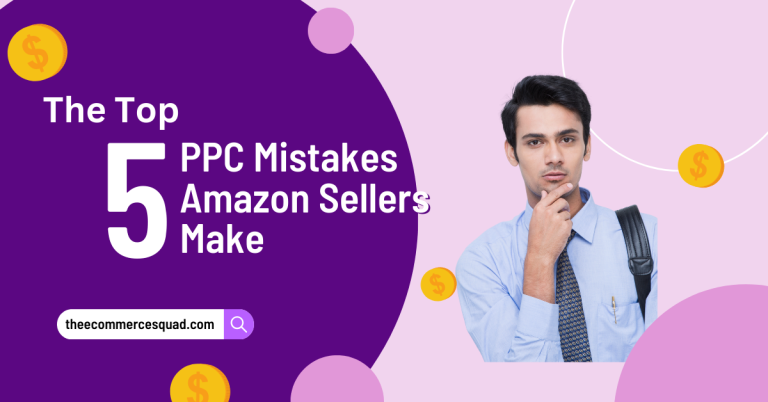The Ultimate Listing Formula: How to Create a Best-Selling Amazon Product Page
Selling on Amazon isn’t just about having a great product. To succeed, your product page needs to be optimized in every possible way to convert visitors into buyers. If you’re wondering how some sellers consistently rank high and sell out their products, the secret lies in creating an irresistible Amazon product page.
In this blog, we’ll share The Ultimate Listing Formula to help your products stand out and become best-sellers. Whether you’re looking for tips on Amazon PPC, product research, or listing creation tools, we’ve got you covered.

1. Craft a Compelling Title
Your title is the first thing shoppers see. It must be optimized for both search engines and real users. Amazon’s algorithm heavily relies on the product title to determine relevancy, so pack it with high-performing keywords while keeping it readable.
Best practices for an Amazon product title:
- Include primary keywords at the start.
- Incorporate relevant product details (size, color, quantity).
- Stick to Amazon’s character limit (typically 200 characters).
- An example of a well-optimized title: “Stainless Steel Insulated Water Bottle – 32oz, BPA Free, Double-Walled, Keeps Drinks Cold for 24 Hours – Leak-Proof & Sweat-Free”
- This title has a clear description, product features, and vital keywords.
2. Use High-Quality Product Images:
Images speak louder than words when selling online. Amazon allows up to 9 images per product, and you should maximize this opportunity to showcase your product from different angles and in real-life scenarios.
Here are the must-have images:
- Main image: A clear, high-resolution photo of the product.
- Lifestyle images: Show the product in use (e.g., a person drinking from the water bottle).
- Infographic images: Highlight key features, such as “keeps drinks cold for 24 hours.”
- Always follow Amazon’s image guidelines, ensuring at least 85% of the image frame is filled with your product.
3. Write Detailed and Persuasive Bullet Points
Bullet points are your chance to highlight the product’s main benefits. Keep them short, to the point, and keyword-rich.
Formula for bullet points:
- Start with a capitalized feature (e.g., “BPA FREE”).
- Follow with a short benefit (e.g., “Safe for all-day use, no harmful chemicals”).
- Include keywords naturally.
Example:
- DOUBLE-WALLED INSULATION: Keeps drinks cold for up to 24 hours, perfect for long outdoor activities or hot summer days.
- BPA FREE: Made with high-quality materials that are safe for your health and the environment.
4. Optimize the Product Description
While bullet points quickly inform, your product description gives you the space to dive deeper into the features and tell a story. This is where you can convince customers that your product is the best choice.
Include:
- A brief introduction about the product’s purpose.
- Focus on customer pain points and how your product solves them.
- Use HTML formatting to break up the text with bold headings and lists.
- If your brand is eligible, you should also utilize A+ Content. It allows for more engaging, visually enhanced product descriptions that can further drive conversions.
5. Conduct Thorough Keyword Research
Proper Amazon product research ensures that your listing targets the right search terms. Use Amazon tools like Helium 10 or Jungle Scout to discover high-ranking, low-competition keywords. You can also research competitors and find terms they rank for that are relevant to your product.
For a global supply chain approach, tools like Alibaba can help you source products efficiently, ensuring your inventory stays stocked, even as sales increase.
6. Master Amazon PPC Campaigns
No matter how optimized your listing is, it’s difficult to rank without driving some traffic to it. That’s where Amazon PPC (Pay-Per-Click) comes in.
Run sponsored product ads for your listing, targeting relevant keywords from your research. Amazon PPC helps boost your product’s visibility while gathering data on which keywords convert best. Remember to start with an automatic campaign, then refine with manual targeting as you analyze your results.
7. Keep Testing and Optimizing
Even after your listing is live, the work doesn’t stop. A best-selling product page is constantly evolving. Use Amazon listing creation tools to track your performance, monitor reviews, and adjust your keywords or images as needed.
Tools like FeedbackWhiz or SellerApp provide insights into what’s working and what needs improvement, helping you stay ahead of the competition.
Conclusion:
The formula for creating a best-selling Amazon product page involves a combination of optimized titles, stunning images, clear bullet points, and effective keyword research. When paired with strong Amazon PPC strategies and continuous optimization, you’ll set your product up for success.







